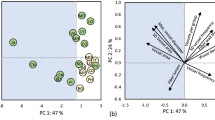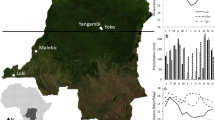Abstract.
Variation in the wood and bark anatomy of the dominant species of a mangrove forest community in Mexico was evaluated in relation to some environmental factors, and their physiological adaptations to salinity and flooding period are discussed. The forest is characterized by three zones according to the presence of dominant tree species and flooding periodicity. Vessel arrangement and wood and bark ray height are strongly associated with flooding zones where trees are growing. Variance analyses revealed significant differences among zones for these anatomical characteristics. Soil texture and water salinity were the most useful parameters for the prediction of values of anatomical characteristics. More abundant vessels in radial multiples in a shorter flooding period suggest a functional advantage of multiple vessel groups. Taller wood and bark rays in response to prolonged flooding period can be attributed to anoxic conditions. Among zones, significant differences in the vulnerability index of the species were detected, but not with respect to relative conductivity. Significant differences among zones exist for wood and bark characteristics involved in vertical and horizontal water transport, photosynthates and gas exchange.
Similar content being viewed by others
Author information
Authors and Affiliations
Additional information
Electronic Publication
Rights and permissions
About this article
Cite this article
Yáñez-Espinosa, L., Terrazas, T. & López-Mata, L. Effects of flooding on wood and bark anatomy of four species in a mangrove forest community. Trees 15, 91–97 (2001). https://doi.org/10.1007/s004680000081
Received:
Accepted:
Issue Date:
DOI: https://doi.org/10.1007/s004680000081




